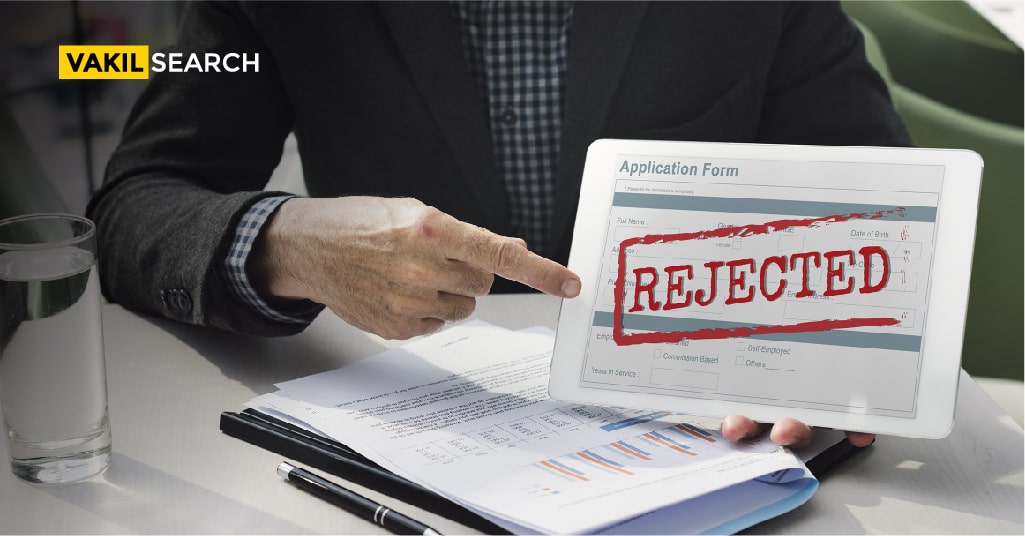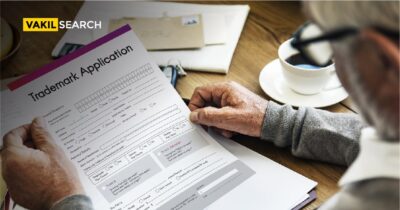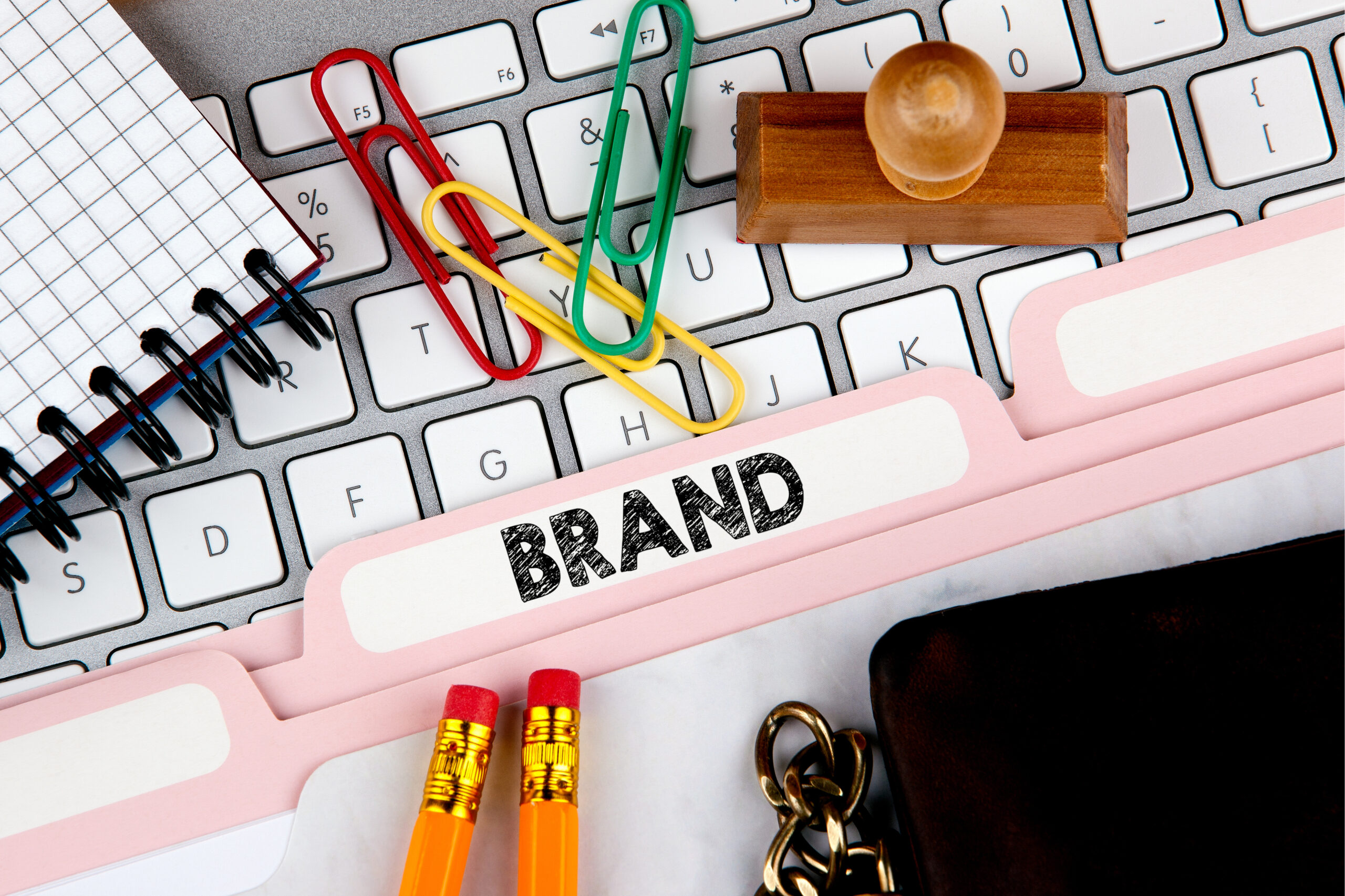There are several reasons to reject a trademark, so it’s vital that you do your homework before applying for one.
A trademark is a brand name or logo which defines your product or service. It can be a letter, phrase, number, word, symbol, shape or combination of alphanumeric digits. A unique brand name or logo is used to differentiate your product or service from others in a particular industry. You need to register your brand name or logo to secure legal protection for it. On receiving ™ Application number you can start using the symbol ™. By registering for a trademark, you can assure your customers/clients that your product or service is unique in the market. It represents the source or acts as an identification for your innovation.
Before register trademark online, you will need to assess your work on determining which type of trademark suits the best for your product or service. Vakilsearch helps you in applying, filing and registering your trademark. You can also have a word with our expert lawyers before you decide to pick your type of trademark. Also remember that when you get a trademark registered in India, then it is valid only in India.
A registered trademark can assist the owner of the mark in preventing unauthorised use of the mark while also creating a valuable intangible asset for the company. The trademark registration procedure, on the other hand, is lengthy, generally requiring 12-18 months to determine the final status of a filed trademark application. Because the trademark application procedure can take so long, many businesses start establishing a brand around a mark while the trademark application is still pending. If the trademark application is finally granted and the mark is registered, the brand-building efforts are safeguarded. However, if the mark is not registered for whatever reason, the trademark may be jeopardized.
Benefits of Owning a Trademark
- The first and foremost benefit is that a trademark acts as an exclusive right towards the ownership of your brand name or logo. You can stop others from promoting your brand or logo, without an authorized license
- The holder of the registered trademark can sue a person if the person has infringed the same logo or name. The unauthorized user can be warned or stopped from using your trademarked name or logo
- Your quality of product or services will be showcased to the world if you own your trademark. It resembles trust, goodness and conviction to the customers/clients in your field of business. Therefore, customer retention would be higher
- Your customers or clients will be able to easily find your product if you registered your design
- It helps people to distinguish between products with a trademark symbol and the one without it
- After registration of the trademark, you can print the ® symbol in your logo representing that your brand name or logo is a trademarked one
- trademark registration is possible at a low cost
- One can register the trademark in other countries too which will help them establish the brand globally. For instance, if you have registered the trademark in India, then you can use the registration certificate to register your brand or logo in other countries
- It helps the franchise to seek the brand or logo since it would be a very established, renowned brand of name, logo
- The owner can transfer his/her registered trademark. The same is not possible for a common law trademark, which can only be transferred with the business
- Recognition of product’s quality
- Protection for 10 Years at low cost.
Rejection of Trademark Application
Every month, a client’s application gets rejected for not fulfilling the requirements of the Trademark Registry. Some of the common reasons are rejection of trademark: having the same trademark, having a misleading description of the product, containing immoral, scandalous words or pictures, including the national flag or the flag of other nations. Generic words are also rejected.
Of the several 100 trademark requests, we get every month, a sizable percentage would not pass the requirements of the Trademarks Registry. Many of these clients are willing to risk rejection of trademark and insist that their applications be filed anyway, only to receive an objection notice a few months later. This ends up being a waste of time.
Common Reasons for Rejection of Trademark Application
The officers of the registry meticulously examine each trademark application, and if they discover any violations of the law or of existing registered marks, they have the authority to reject the mark’s application for registration. At this moment, the application status will read “Marker for Exam.” The following are the reasons the trademark registration application was denied.
Application process
The application’s proper filing and presentation of all relevant material in accordance with the Act’s requirements are the first things the examiner will check. The application will be rejected if the examiner discovers any errors in the procedure or the supporting papers.
Similar to a registered trademark
One must always determine whether their mark is identical to or confusingly similar to an existing trademark before filing for one. You can accomplish this by conducting a public search on the controller general’s website for patents, designs, and trademarks, or you can simply hire a lawyer who specialises in trademark applications. The examiner has the authority to reject an application if he determines that the mark being sought is confusingly similar to another mark that has already been registered or is currently registered.
Descriptive words or design
whether the mark includes any words or phrases that are typically used to describe products. It would be unjust to other individuals, for instance, to try to trademark the word SWEET for the purpose of promoting goods like chocolate or sweets.
General words or design
General terms like “pens” or “pencils” cannot be trademarked to sell pens or pencils since more than one business cannot use them exclusively. As a result, the examiner may decide not to register such a mark.
Offensive Language or Imagery
An offensive name or design cannot be used in a trademark since doing so would be against public decency and order. Therefore, the examiner will typically reject words of designs that are offensive.
Confusing Terms or Design
Any mark that could mislead the consumer about the product’s origin, maker, quality, material, etc. is considered confusing or deceptive. For instance, if a FISH is used as the mark but the product is merely red meat, the mark may be disregarded because it is deceptive.
Official designs or words
The examiner will reject the mark’s application for registration if it incorporates any official words, terms, designs, or images because it is detrimental to the general welfare. It may mislead the buyer into believing that an official body has approved of it. For instance, if the trademark represents a country’s flag, it will be denied for this reason.
Conditions and restrictions
The examiner may reject the mark for registration as is if he believes it to be valid but needs certain modifications to the way it is used or looks.
Trademark Objection:
The examiner may object to the mark’s registration after carefully reviewing it for registration. The application’s status in this situation will read “Objected.” The applicant now gets the opportunity to present his argument to the examiner. The objection is often made in accordance with Sections 9 or 11 of the Act.
Objection under Section 9
The Act’s Section 9 lays out specific reasons for denying registration. Any mark that is: Section 9 rejects the mark.
- Descriptive,
- General,
- Misleading regarding the place of origin of the goods or services,
- Misleading about their nature,
- misleading about their quality
Section 9 of the Act
The applicant must demonstrate that the mark of the applicant can be easily recognised by the customer in relation to the delivered goods or services in order to overcome this objection. For instance, the electronic corporation Apple can misrepresent the goods it sells since its trademark is an apple. It can be demonstrated, however, that the brand has since taken on a particular meaning and is quickly recognised by customers as being associated with electronics.
Section 11 of the Act
The applicant has two choices here:
- Dispute the claim that the mark is distinct from the competing mark. In this situation, he must demonstrate that his mark can unquestionably be differentiated as two separate markings and is noticeably different from the competing mark.
- Obtain a no objection affidavit from the owner of the registered mark that is in conflict.
Refusal
The examiner will ultimately determine whether to permit the mark to be registered after taking into account the applicant’s reasons against the objection of the registration of the mark. Here, he will either change the application’s status to Exam Report Issued, which denotes that it has been accepted and will soon be published in the official journal, The Trademark Journal, giving the public and other parties the opportunity to object. Alternatively, he can change the status to rejection of trademark, which indicates that the registration request has been denied.
Appeal
The applicant’s ultimate recourse once the registration is rejected is to file an appeal with the Intellectual Property Appellate Board (hereinafter referred to as IPAB). Within three months after the day the registrar issued the trademark rejection decision, an appeal to the IPAB must be submitted. If the appellant can provide sufficient justification for why he could not contact the IPAB prior to the deadline, this time limit may be extended. Depending on the type of trademark registration the applicant or appellant seeks, the IPAB has two distinct mechanisms for handling appeals. The TradeMarks (Applications, Appeals, and Fees to the Intellectual Property Appellate Board) Rules must be followed while filing the appeal.
Trademark for one class
The TradeMarks (Applications, Appeals, and Fees to the Intellectual Property Appellate Board) Rules Form 2 must be used if the appellant applied for a trademark under one class using Form TM-1. The cost of this appeal is 5,000 rupees.
Trademark for two or more classes
The appeal must be submitted using Form-3 if the appellant applied for a trademark in more than one class using Form TM-A. The filing fee for this appeal is 10,000 rupees. The appellant must confirm the validity of each appeal. The appeal will be referred to the Deputy Registrar for review after being filed.
If he discovers any errors, he will give the appellant a chance to fix them and resubmit their appeal. The appeal shall be regarded as abandoned if the appellant fails to comply. The Deputy Registrar will assign it a serial number if no flaws are discovered. The court with the appropriate jurisdiction will hear the case.
Also, Read:










